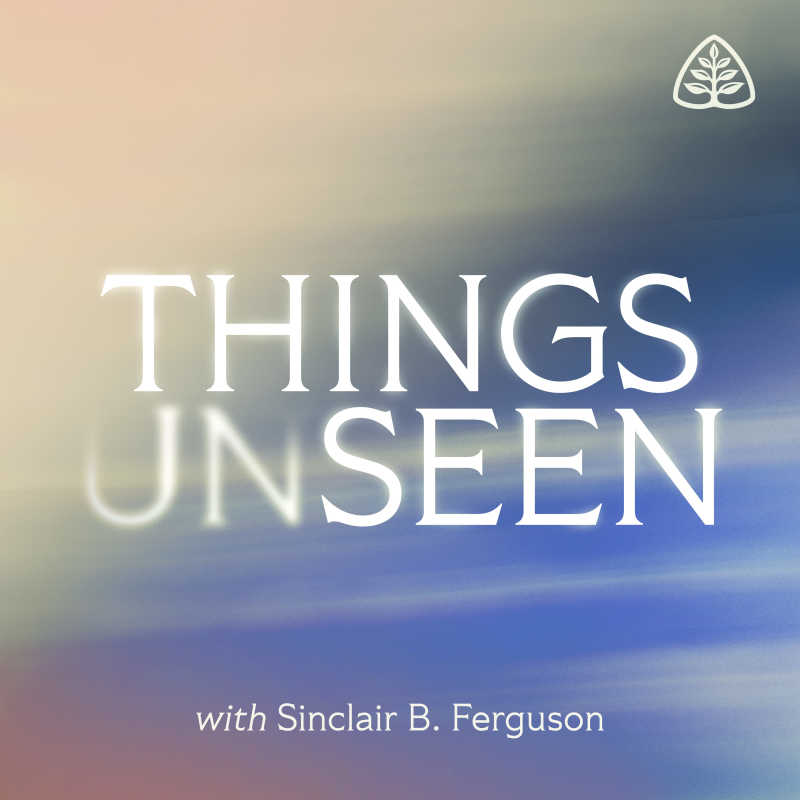Worthy Is the Lamb

After long ages of conflict for the people of God, Jesus Christ arrived to fulfill Genesis 3:15 in His conquest of Satan. Today, Sinclair Ferguson invites us to join with all the redeemed in exalting our triumphant Savior.
Transcript
Well, we’ve come to the end of another week on Things Unseen, and we’ve been pulling on the ball of thread that’s wound into Genesis 3:15 this week. Actually, we’ve only reached Genesis 22. But I hope it’s perhaps helped us to see how you can unwind the story of the Old Testament yourself. Since we’re at the end of the week, I’m going to fast forward into the New Testament.
Genesis 3:15 announces a conflict that runs throughout Scripture right to its climax in Jesus’ own ministry. I think we need to remember that from beginning to end, our Lord Jesus’ life was marked by conflict. It emerges in Herod’s early attempts to kill Him. It reappears in His wilderness temptations. Then think of his conflict with the demons—their invasion of Palestine was surely a striking feature of His own lifetime, as well as His conflict with the religious leaders. Ultimately, of course, His conflict is with Satan himself. He stands behind every other conflict with Jesus.
I think this helps to explain the vision statement Jesus announced at Caesarea Philippi: “I will build my church, and the gates of hell shall not prevail against it” (Matt. 16:18). The goal of Jesus’ ministry was to build the church, an assembly of God’s people. And notice, He says He’s going to do that in enemy-occupied territory, where the strategies of Satan planned at the gates of hell are going to be effected, but the serpent will not be able to withstand the seed of the woman. Nothing will prevent Christ’s ultimate victory and His building of His church.
The Apostle John expresses all this very pointedly in 1 John 3:8: “The reason the Son of God appeared was to destroy the works of the devil.” Remember how John saw this in dramatic form in the amazing vision he had on the island of Patmos. He saw a great red dragon, that ancient serpent who is called the devil and Satan, the deceiver of the whole world, being thrown down to the earth, and having failed to destroy the child who came to rule the nations, John sees him pursuing the woman from whose womb He came, but she too is wonderfully preserved (see. Rev. 12:7–17).
That’s where the church is now, really. She is the woman in need of protection against the dragon, the serpent, the devil, until the day dawns when the devil who had deceived the saints will be thrown into the lake of fire and sulfur, where the beast and the false prophet are, and tormented day and night forever and ever. That will be the signal for the coming of the new heavens and the new earth, for the city of God to appear, for the bride of Christ to begin her honeymoon in the new garden of Eden in Revelation 21 and 22.
What becomes clear in this picture is that at the center of all history stands the One who holds the end of this ball of thread that unravels from Genesis 3:15 to the end of Revelation—that is, our Lord Jesus Christ.
Eve’s son Cain murdered her son Abel, and she must have wondered where the promise was heading. Lamech hoped that perhaps his son Noah would be the one who would bring rest. As Abraham returned from Mount Moriah, he must have wondered when and where God would provide the lamb for all peoples. Did he catch any glimpse of the fact that the ultimate explanation for why he was allowed to spare the son he loved was because God the Father was willing not to spare His own Son but to deliver Him up for us all, as Paul says in Romans 8:32?
In Revelation 5, one of the heavenly elders says to John, “The Lion of the tribe of Judah, the Root of David, has conquered, and he can open the scroll and its seven seals.” John tells us: “I saw a Lamb standing, as though it had been slain . . . And he went and took the scroll” (vv. 5–7). This is why the story ends with the living creatures, the elders and myriads of saints singing:
Worthy is the Lamb who was slain,
to receive power and wealth and wisdom and might
and honor and glory and blessing! (Rev. 5:12)
That’s where Genesis 3:15 was heading all along. I hope that fact encourages you to join in heaven’s song of praise to the Lamb who was slain.

